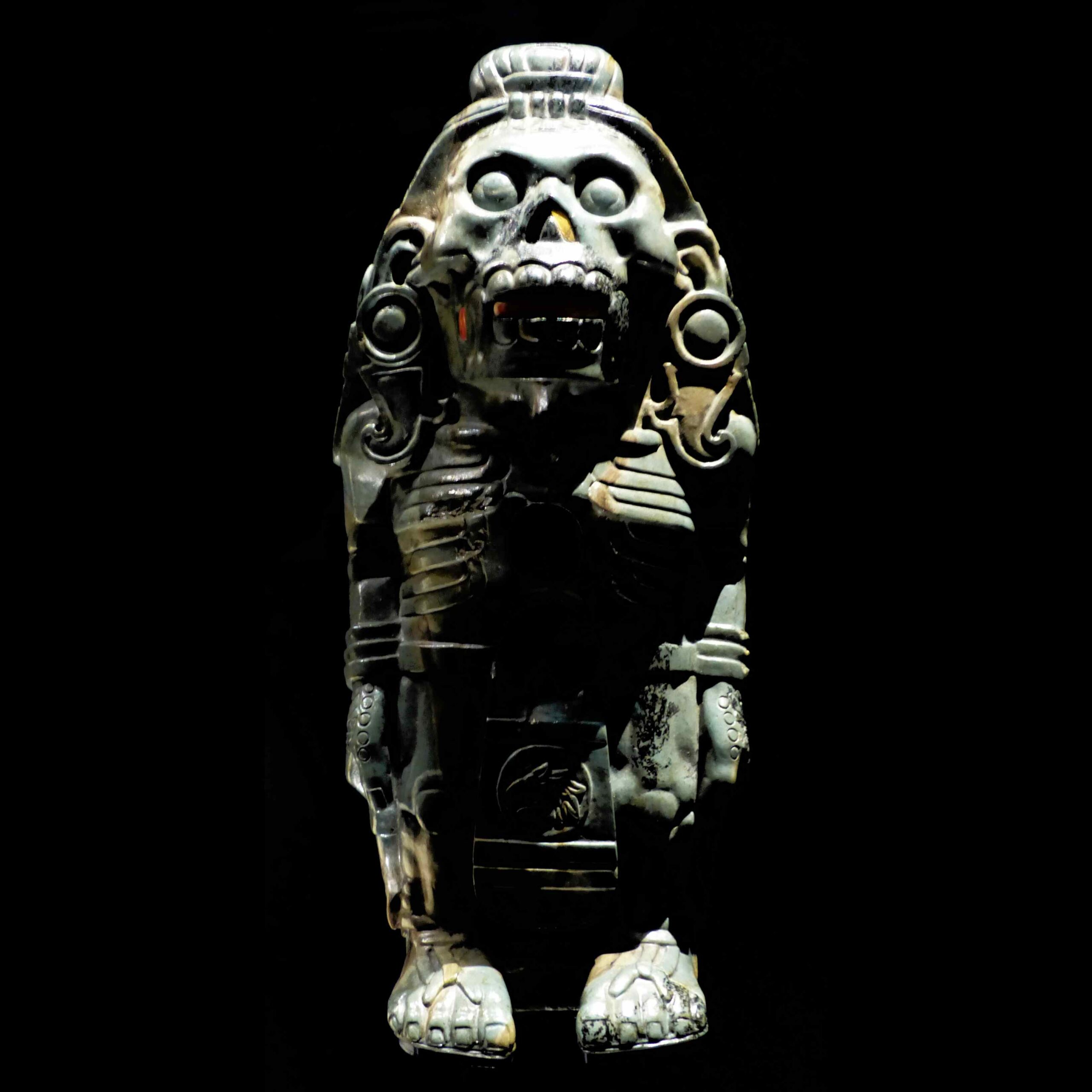Xolotl was a deity linked with Quetzalcoatl, one of the most prominent gods in the Aztec pantheon, according to Aztec mythology. In reality, Xolotl was thought to be Quetzalcoatl’s twin brother.

Unlike his sibling, Xolotl, however, is associated with negative traits, which can be seen in both his physical shape and how he is represented elsewhere. Whatever the case may be, Xolotl is an important figure in Aztec mythology and occurs in numerous stories.
Fire and Lightning. Dogs and Deformity

Xolotl was worshipped by the Aztecs as the deity of lightning and fire. He was also connected with dogs, twins, deformities, disease, and disaster. These associations may be observed in the way Xolotl is represented as well as the stories in which he appears. In Aztec art, for example, this god is frequently portrayed with the head of a dog.
Furthermore, the term ‘xolotl’ may also imply ‘dog’ in Nahuatl, the Aztec language. It should be noted that dogs were regarded unfavourably by the Aztecs as a dirty animal. As a result, Xolotl’s relationship with dogs is not totally favourable.
A Sickly God

Xolotl’s relationship with illness may be observed in the fact that he is shown as having an emaciated, skeletal physique, while his backward feet and empty eye sockets reflect his association with abnormalities. There’s a folklore about how Xolotl got his vacant eye holes. The other gods in this mythology agreed to sacrifice themselves in order to create humans. This ritual was skipped by Xolotl, who sobbed so much that his eyes sprang out of their sockets.
Role in the Creation Story
When the gods produced the Fifth Sun in a similar creation story to the one recounted in the preceding paragraph, they discovered that it did not move. As a result, they resolved to sacrifice themselves in order to move the Sun. Xolotl served as the executioner, slaughtering the gods one by one. In some versions of the tale, Xolotl kills himself at the end, as he was supposed to.
In some versions, Xolotl plays the role of a trickster, escaping the sacrifice by first changing into a young maize plant (xolotl), then into an agave (mexolotl), and last into a salamander (axolotl). At the end however, Xolotl was unable to flee and was slain by the deity Ehecatl-Quetzalcoatl.
Xolotl and Quetzacoatl

Although the Aztecs thought twins to be a sort of malformation, Xolotl’s twin, Quetzalcoatl, was revered as one of the most powerful deities. The Xolotl and Quetzalcoatl occur together in several tales. Coatlicue (which means “skirt of snakes”), a primordial earth goddess, is believed to have given birth to the two gods.
According to one version of a well-known tale about the origin of mankind, Quetzalcoatl and his twin journey to Mictlan (the Aztec underworld), to gather the bones of the dead so that humans can be born. It should be noted that Xolotl was also responsible for bringing fire from the underworld for humans.
Xolotl and Quetzalcoatl were also thought to be the twin phases of Venus, since the Aztecs believed the former was the twilight star and the latter was the morning star. The essential role of guiding and guarding the Sun on its treacherous night trip through the land of the dead fell to Xolotl as the evening star.
Perhaps it was also because of this duty that the Aztecs considered him to be a psychopomp, or a being who escorted the freshly deceased on their journey to the underworld.
To summarise, Xolotl was not one of the most fortunate Aztec gods, given all of the terrible things he was linked with. But it’s still important to note that he played a significant role in Aztec mythology, as he guided the Sun on its nightly journey through the underworld, and he also guided the dead to their final resting place.



